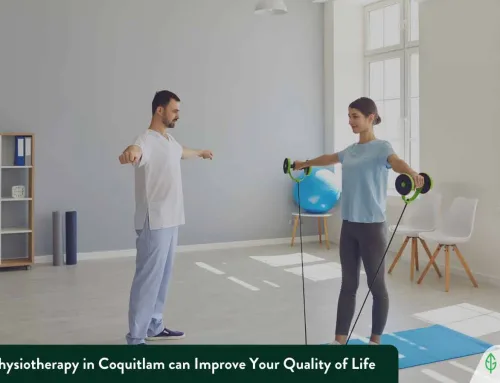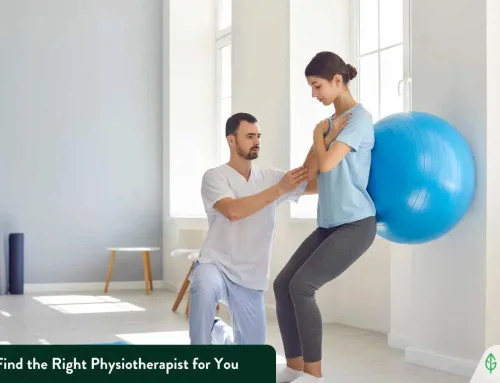Wondering if you’ve got a hip or pelvic pain? The joints associated with this type of pain are commonly misunderstood. And that’s we’re going to uncover for this post.
As we all know the most essential part of treating any type of pain is to discover the real cause. And as you explore further on this post you will see that the type of treatments will vary on the condition that you have.
So, let’s discover first how the two joints work. Also, we’re going to highlight the cause of pain associated with the two joints and its symptoms.
The Hip Joint
The hip joint is known to be the ball and socket type of synovial joint connecting the pelvic girdle to the lower limb. This is formed by the articulation between the pelvic acetabulum and the head of the femur. The sciatic nerve which is the largest nerve of the body is passing by behind the hip joint.
This joint is responsible for the leg and the upper body’s movement. It’s also the one supporting the weight of the body.

Source: WebMD
It is among the stable joint of the body which can withstand a repetitive motion. Although, regarded as a stable joint that can withstand wear and tear, yet it can still wear down or become damaged. This is due to the reason that the muscles and tendons within the hip can get overused. Thus, you can feel the pain.
What can you feel if you have Hip Pain?
Pain within the hip joint can be temporary or chronic. It is usually among the common concern, particularly for adults. The pain that you will feel will depend on the condition that you have. It may be coming from the tendons, muscles, ligaments, and soft tissues surrounding your hip joint. It may be an issue from your lower back or spine. This pain is usually located between the hip and the knee.
Hip pain can be felt on the following:
- Upper Thigh
- Within the hip joint
- Outer Groin
- Outside the hip joint
- Buttocks
When you experience hip pain, you may notice that it will get worse when you perform some activities especially when this is caused by arthritis. You will also have a limited range of motion.
You may also feel the pain between your hip and knee. Also, discomfort can be felt when you exercise, walk, or even when sleeping. The discomfort can bring difficulty when you’re sleeping.
The Causes
As mentioned earlier, hip pain may vary depending on the condition. Among these conditions that may cause hip pain are the following:
- Arthritis
- Hip Fractures or other bone deformity caused by injury
- Bursitis
- Tendinitis
- Muscle or Tendons Strain
- Hip Labral Tear
- Infection caused by cancer in the bone
- Osteonecrosis or Avascular Necrosis
The pain may either come from the inside of the hip joint or outside it. It problem comes from the hip joint if you can feel the pain inside your hip or groin. But if you can feel the pain that is outside your hip, upper thigh, or butt, the cause can be outside the joint, it can be within the muscles or soft tissues.
The Treatments
As the cause of the pain may vary, the treatment option will also depend on your condition. If the hip pain is just temporary or short term, treatments can consist of the following:
- Take some rest, wherein you need to avoid doing some things that require bending your hip. You may also avoid sleeping within the part of your hip that is painful.
- You may also take some pain-relieving medications.
- Pain can also be treated with heat and cold treatment – wherein you may treat the painful hip with cold packs or have a warm bath to reduce the pain and also helps in preparing the muscle for stretching.
- Doing some gentle stretches can help in reducing your hip pain, especially if it is caused by strain or a pinched nerve.
if the pain is not severe and you know what’s causing it, you may take those home remedies above. Also, if the pain is caused by strains, tendinitis, and or types of arthritis, you can deal with it at home. You may also try some gentle stretches and exercises.
Other types of treatment
When home treatments won’t work, it’s vital to seek medical help before the pain can get worse. It is essential to get checked in order to find out the exact cause of pain. Some of the treatments may include:
- Physical therapy which can help in reducing hip pain especially for patients with arthritis, tendinitis, strains, and other less severe hip problems
- Hydrotherapy which a form of physical rehab uses temperature and pressure to encourage blood flow all over the body. This can help in reducing the pain in the hips
- Medications that can aid in hip pain caused by forms of arthritis
- Crutches and canes are also considered to assist the movement and to avoid stressing your joints
Surgery may be required if you have a severe condition such as septic arthritis, avascular necrosis, cancer, hip labral tear, Osteomyelitis, Legg-Calve-Perthes disease, Inguinal hernia or you’ve got some pinched nerve.
The Pelvic Joint
The pelvic joint also called a sacroiliac joint or the SI joint is the connection between the spine and the pelvis.SI joint can be found where the sacrum and ilium meet. The sacrum is near the bottom of your spine which is above your tailbone. It’s a triangle-shaped bone. The sacrum supports the spine and this is supported by an ilium on each side. It works as a shock absorber which reduces the pressure on your spine.
You can find two SI joints in the lower back – sitting on each side of the spine. Checking from the back, these joints are found below the waist where you can see two dimples. It provides support and stability to the upper body. They are responsible for supporting the entire weight of the upper body especially when standing, walking, or shifting loads to your legs.

These SI Joints are supported by strong ligaments and muscles. As we age, these bones became arthritic and ligaments can stiffen. Then, the cartilages wear down, thus the bones may rub together which causes pain.
What can you feel if you have Pelvic or Sacroiliac Joint Pain?
When there is inflammation within one or both of the SI joints – this condition is called sacroiliac joint dysfunction or known as sacroiliitis. This condition may be caused by joint dysfunction. It includes a number of conditions such as the following:
- Osteoarthritis
- Ankylosing Spondylitis (AS)
- Gout
- Injury
- Pregnancy
- Walking Patterns
You can feel that you have a Sacroiliac joint pain if you can feel this pain starting from the lower back, buttock and these may radiate to your lower hip, your groin, and upper thigh. This pain may be one-sided or can occur within both sides. You may feel the following:
- Numbness or tingling sensation in your legs
- Weakness within your legs, where you may feel that your legs may buckle and can’t support your body
- It can also be painful if you are sitting, standing, sleeping, walking, or climbing within the stairs
- Stiffness or burning sensation
- Pain within your thighs and upper legs
There are some people to have difficulty when riding a car or just by standing, sitting, or even when walking too long.
The Causes
The most common cause of SI Joint pain is when ligaments become too loose or too tight. This may happen due to the following:
- Fall
- Work Injury
- Car Accident
- Pregnancy
- Child Birth
- Hip or Spine Surgery ( laminectomy, lumbar fusion)
SI joint pain may also occur when the movement in the pelvis is not the same within both sides. When there is an uneven movement within the pelvis SI joint can become painful. This happens due to having a leg that is longer or weaker than the other or with arthritis in the hip or knee problems.
The Treatments
Among the initial recommended treatment to ease the SI joint pain include non-surgical treatment like physical therapy, low-impact exercise, and massage. These types of treatments can help to strengthen and stabilize the SI joints.
If these therapies and exercise may not work, other treatments may include muscle relaxants, anti-inflammatory medications, oral steroids which is for short-term use only, corticosteroid injections within the joints, and radiofrequency ablation which uses energy to deactivate the nerves that cause the pain.
When all other treatments won’t work, surgery can be considered especially if you have chronic pain. But, this is the last option.
So, do you have hip pain or pelvic pain?
As noted above the hip and pelvic pain are two distinct types of pain. These pain are coming from two different types of joints. When you have hip pain you may notice the pain between your hip or knee, while for the pelvic pain, you can feel the pain starting from your lower back, lower back, buttock and these may radiate to your lower hip, your groin, and upper thigh.
Also, as highlighted above, the symptoms and treatments associated with these types of pain may vary depending on the condition that you have or the cause of pain.
Looking for a Professional Physiotherapist in Coquitlam?
If your doctor recommends that your hip or pelvic pain will be treated with Physiotherapy, you can count on us. At Evergreen Rehab and Wellness, we have a skilled and professional physiotherapist in Coquitlam that will provide you a custom and diverse series of physiotherapy programs.
You may book our services online, just click here.
Evergreen is Everywhere for Everyone – Let’s Help You Achieve Your Health and Wellness Goals
At Evergreen Rehab & Wellness – Coquitlam, we have Physiotherapists that will help you achieve your health and wellness goals.
We don’t only have Physiotherapists in Coquitlam, we also have Physiotherapists in Langley that are always ready to provide patients in these areas with custom and high-quality care.
Sign-Up Today!
Get the daily those of health and wellness tips and the latest offers across our clinics.





